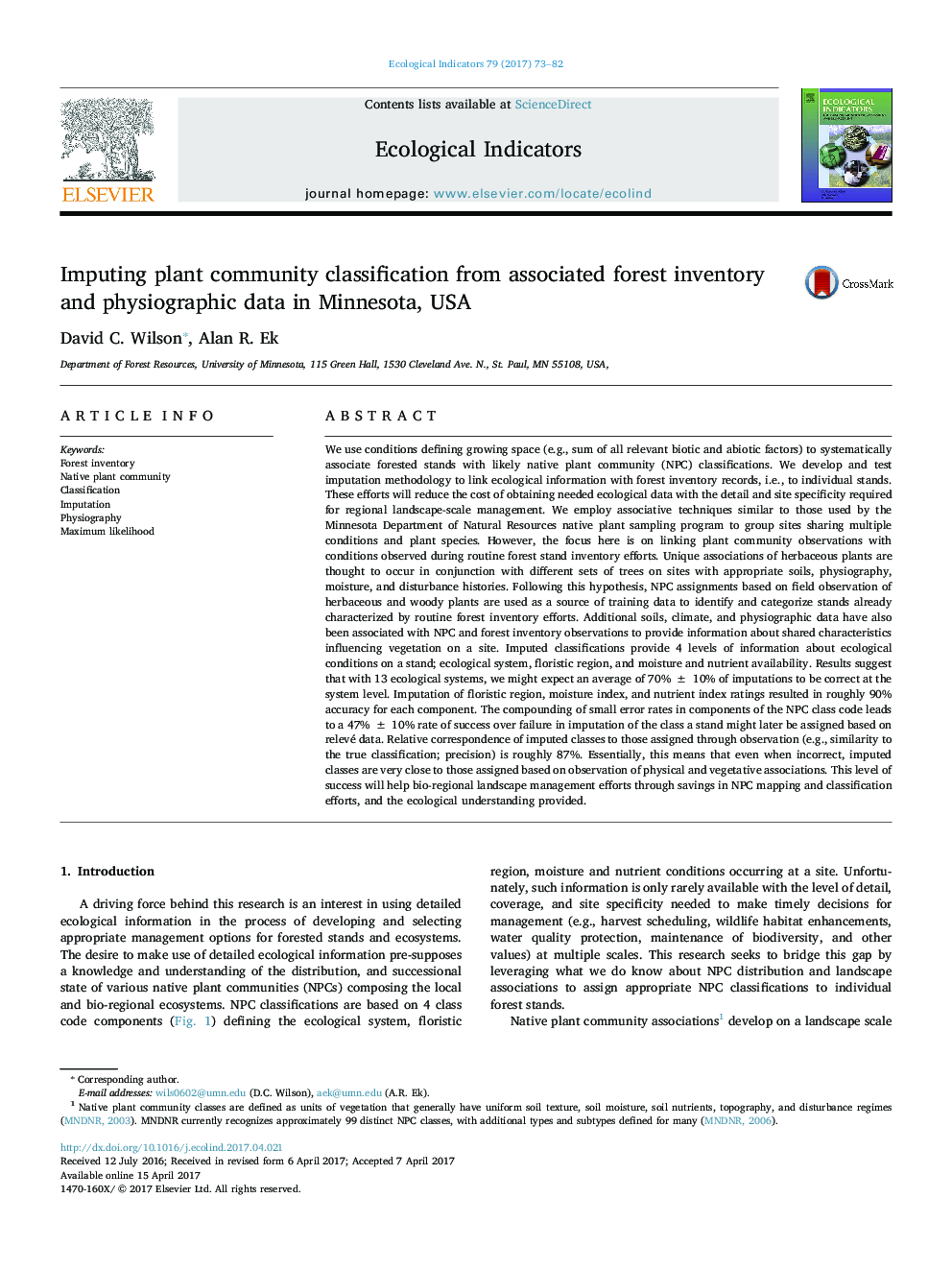| Article ID | Journal | Published Year | Pages | File Type |
|---|---|---|---|---|
| 5741754 | Ecological Indicators | 2017 | 10 Pages |
â¢A native plant community (NPC) classification model is developed.â¢Classifications are produced for 1.7 million hectares of forestland in Minnesota.â¢Imputation model performance improves on existing software.â¢Model flexibility accommodates as many predictors and predictor levels as needed.â¢Potential applications and improvements to the model are discussed.
We use conditions defining growing space (e.g., sum of all relevant biotic and abiotic factors) to systematically associate forested stands with likely native plant community (NPC) classifications. We develop and test imputation methodology to link ecological information with forest inventory records, i.e., to individual stands. These efforts will reduce the cost of obtaining needed ecological data with the detail and site specificity required for regional landscape-scale management. We employ associative techniques similar to those used by the Minnesota Department of Natural Resources native plant sampling program to group sites sharing multiple conditions and plant species. However, the focus here is on linking plant community observations with conditions observed during routine forest stand inventory efforts. Unique associations of herbaceous plants are thought to occur in conjunction with different sets of trees on sites with appropriate soils, physiography, moisture, and disturbance histories. Following this hypothesis, NPC assignments based on field observation of herbaceous and woody plants are used as a source of training data to identify and categorize stands already characterized by routine forest inventory efforts. Additional soils, climate, and physiographic data have also been associated with NPC and forest inventory observations to provide information about shared characteristics influencing vegetation on a site. Imputed classifications provide 4 levels of information about ecological conditions on a stand; ecological system, floristic region, and moisture and nutrient availability. Results suggest that with 13 ecological systems, we might expect an average of 70% ± 10% of imputations to be correct at the system level. Imputation of floristic region, moisture index, and nutrient index ratings resulted in roughly 90% accuracy for each component. The compounding of small error rates in components of the NPC class code leads to a 47% ± 10% rate of success over failure in imputation of the class a stand might later be assigned based on relevé data. Relative correspondence of imputed classes to those assigned through observation (e.g., similarity to the true classification; precision) is roughly 87%. Essentially, this means that even when incorrect, imputed classes are very close to those assigned based on observation of physical and vegetative associations. This level of success will help bio-regional landscape management efforts through savings in NPC mapping and classification efforts, and the ecological understanding provided.
Graphical abstractDownload high-res image (158KB)Download full-size image
